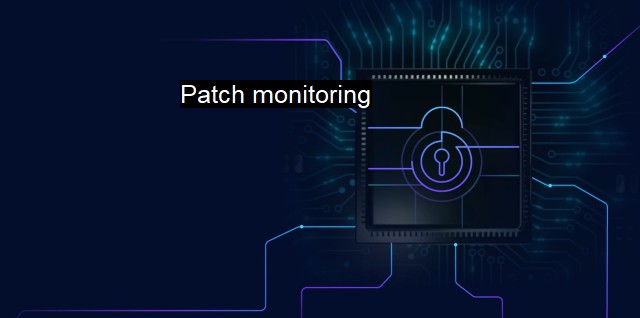What is Patch monitoring?
The Importance of Patch Monitoring: Safeguarding Against Cybersecurity Threats to Protect Sensitive Data and Computing Devices
Patch monitoring is an essential aspect of cybersecurity practices. It refers to the process of managing, identifying, installing, and tracking the variety of software patches in an organization. Software patches offer crucial updates to operating systems, applications, and infrastructures that help reduce vulnerabilities and security risks. The idea behind it is to protect technology and information assets of a company from harm.Understanding the complexities of patch monitoring demands an appreciation for the intricate networks of technology typically embedded within any modern organization. Advancements in technology have led to networks comprised of diverse systems running on varied operating systems with a multitude of applications. While these advancements have led to increased efficiency and interconnectedness, they also introduce a spectrum of vulnerabilities that can be exploited by opportunistic threat actors operating in the cyber realm.
Each application, operating system, or piece of technology, represents a pathway into a network. These entry points can become vulnerabilities particularly when that technology is not up to date. Developers often recognize these threats and devise software patches to mitigate identified security gaps. Patch monitoring, therefore, involves the identification of any outdated or vulnerable technology, along with an organized application of relevant patches to reduce potential cybersecurity threats.
The core of patch monitoring involves monitoring systems for disclosure of vulnerabilities, availability of patches, and applying patches responsibly and promptly. Any technology system would require regular and routine checks, called 'health checks', to make certain its updated status. the patch management system needs to verify if these patches were successfully applied and function as expected.
This vigilance is critical because new vulnerabilities are frequently identified, and new patches are continually released. It's a dynamic landscape requiring an ongoing commitment. A unpatched, vulnerability can allow for a plethora of attacks, including but not limited to, data theft, system sabotage, and unauthorized access to sensitive information.
Effective patch monitoring can prove to be challenging due to the number of technology elements within a typical organisation. Smaller organizations may manually handle patch monitoring. the task rapidly becomes complex and costly as the organization scales up. As such, automated patch management tools are often employed to manage the workload. These tools scan systems to detect outdated software, automate the process of patch deployment across extensive systems, and monitor the implementation and application of those patches.
Patch monitoring is an integral part of antivirus strategies. Antivirus applications often have built-in mechanisms not just to detect and eradicate threats, but to monitor active vulnerabilities and apply patches as necessary. This provides a first line of defence against threats by addressing the weaknesses that viruses and malware seek to exploit.
Patch monitoring is key to secure the integrity of an organization's cyber-health. It raises defenses against potential security threats and strengthens the walls against harmful cyber-attacks. No modern entity can afford to underestimate the importance of dedicated and effective patch monitoring. Cutting edge cybersecurity involves keen patch monitoring in its armament, helping the global economy address the increasingly sophisticated realm of cyber threats that rise in parallel with the ever-evolving landscape of digital innovation.

Patch monitoring FAQs
What is patch monitoring in cybersecurity?
Patch monitoring is the process of continuously checking for updates and security patches for operating systems, applications, and other software used in an organization's network. Patch monitoring is critical to identify and remediate vulnerabilities that can be exploited by cybercriminals.Why is patch monitoring important in antivirus software?
Antivirus software relies on up-to-date patches for applications and operating systems to effectively detect and eliminate viruses and malware. If patches are not updated, antivirus software may miss the latest threats and leave the network vulnerable to attacks.What are the benefits of using patch monitoring for cybersecurity?
Patch monitoring helps organizations identify and remediate vulnerabilities before they can be exploited by attackers, reducing the risk of data breaches and cyber attacks. It also helps maintain compliance with industry regulations and standards.How often should patch monitoring be performed?
Patch monitoring should be performed regularly to ensure that all systems and software are up-to-date with the latest patches and updates. The frequency of patch monitoring depends on the organization's size, complexity, and industry regulations. However, it is recommended to perform patch monitoring on a weekly or monthly basis.| | A | | | B | | | C | | | D | | | E | | | F | | | G | | | H | | | I | | | J | | | K | | | L | | | M | |
| | N | | | O | | | P | | | Q | | | R | | | S | | | T | | | U | | | V | | | W | | | X | | | Y | | | Z | |
| | 1 | | | 2 | | | 3 | | | 4 | | | 7 | | | 8 | | |||||||